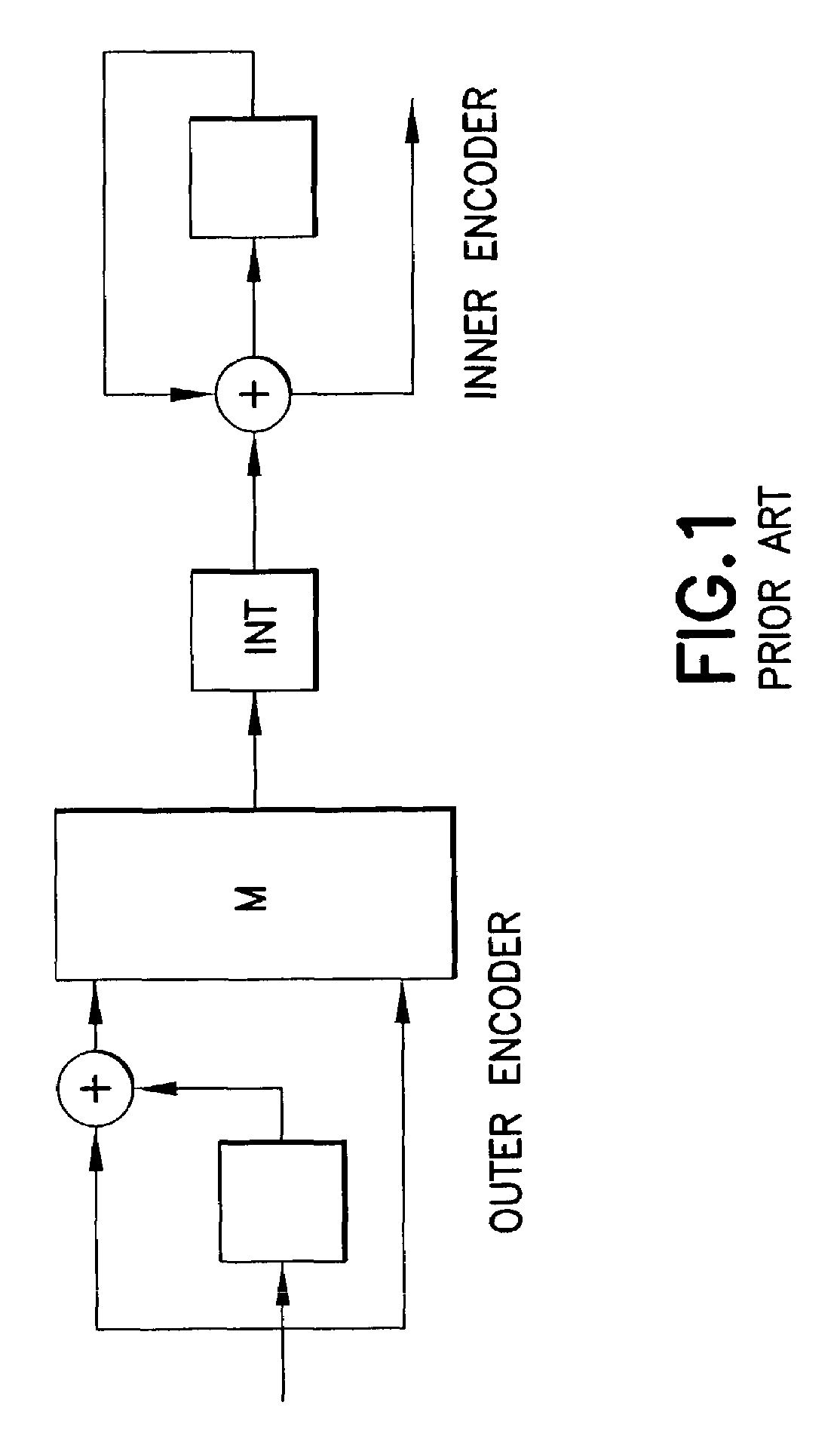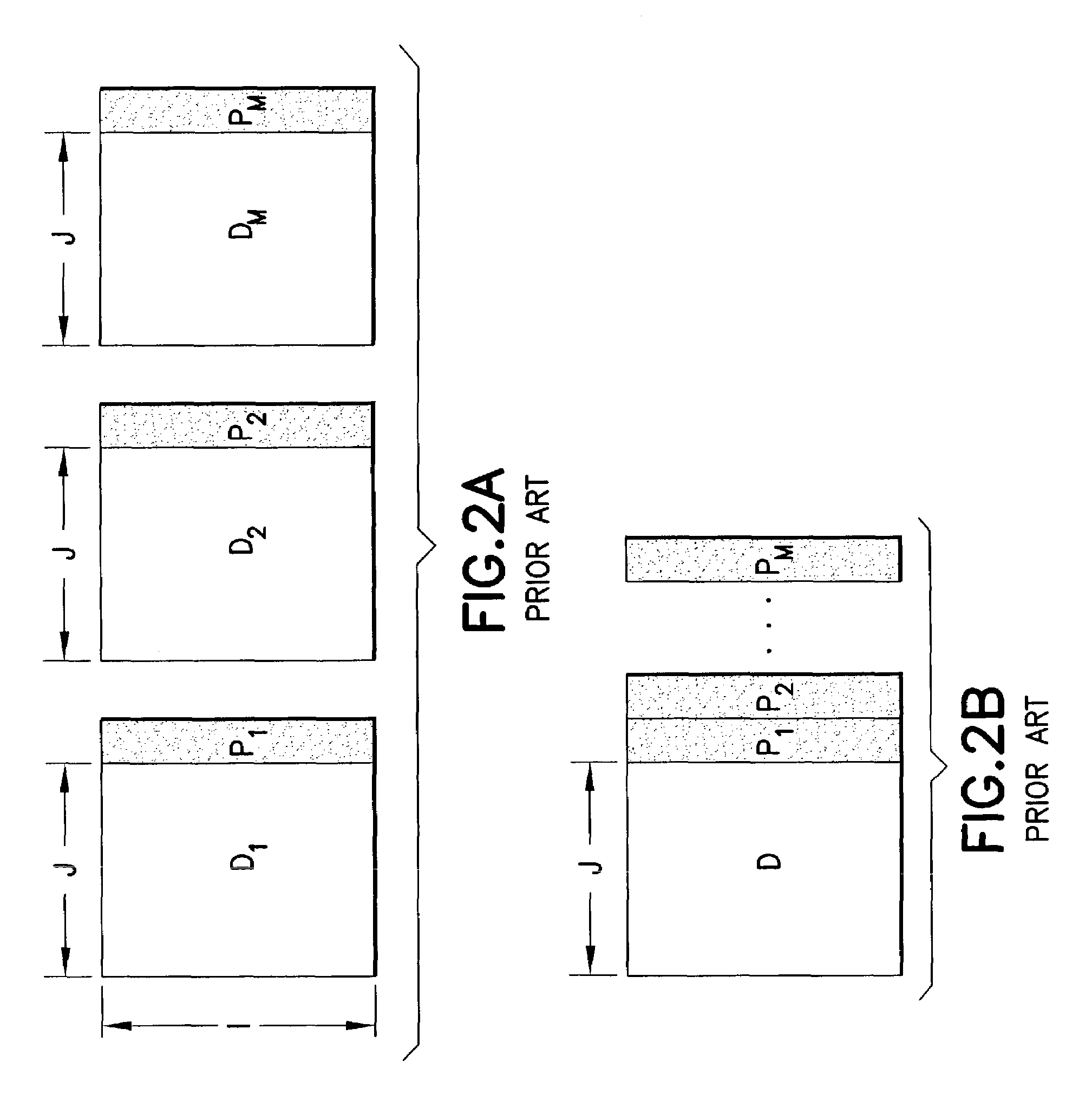Low complexity decoding schemes for single-parity-check (SPC) based concatenated codes
a low complexity, concatenated code technology, applied in the direction of code conversion, forward error control use, code conversion, etc., can solve the problems of high low decoding complexity of classical turbo codes, and inability to meet the requirements of high coding rate, so as to reduce complexity and improve performance.
- Summary
- Abstract
- Description
- Claims
- Application Information
AI Technical Summary
Benefits of technology
Problems solved by technology
Method used
Image
Examples
Embodiment Construction
[0035]In the ensuing detailed description of this invention zigzag codes are presented as punctured differential codes. By so presenting the zigzag codes one is enabled to consider the ACC and the concatenated zigzag codes as special cases of concatenated coding schemes formed by differential encoders. In order to meaningfully compare these coding structures it is preferred to use a tight bounding technique and simulation results. Reference with regard to the tight bounding technique can be made to G. Poltyrev, Bounds on the decoding error probability of binary linear codes via their spectra, IEEE Trans. on Information Theory, vol. 40, pp. 1284-1292, July 1994, and to I. Sason and S. Shamai, Improved upper bounds on the ML decoding error probability of parallel and serial concatenated turbo codes via their ensemble distance spectrum, IEEE Trans. Information Theory, vol. 46, pp. 24-47, January 2000. Next, a comparison is made of the performance of the foregoing low complexity coding ...
PUM
 Login to View More
Login to View More Abstract
Description
Claims
Application Information
 Login to View More
Login to View More - R&D
- Intellectual Property
- Life Sciences
- Materials
- Tech Scout
- Unparalleled Data Quality
- Higher Quality Content
- 60% Fewer Hallucinations
Browse by: Latest US Patents, China's latest patents, Technical Efficacy Thesaurus, Application Domain, Technology Topic, Popular Technical Reports.
© 2025 PatSnap. All rights reserved.Legal|Privacy policy|Modern Slavery Act Transparency Statement|Sitemap|About US| Contact US: help@patsnap.com



